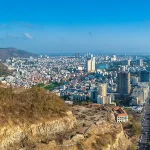Introducing Ecuador’s Traditional Dishes
Welcome to your go-to list of the best food in Ecuador — quick, clear, and made for travelers who want to taste it all without wading through a history lesson. This is not a deep dive. It’s a practical guide you can use to decide what to try, where to start, and what not to miss.
We know it’s easy to get overwhelmed by unfamiliar names and endless options when exploring a new cuisine. That’s why we’ve created something extra: an interactive, fillable PDF checklist to track your food journey across Ecuador. With this tool, you can check off each dish you taste, jot down your thoughts, and build your own memory bank of flavors. You’ll find the download link at the bottom of the article.
If you’re craving more than just a list — like learning about the spices, techniques, and cultural roots behind Ecuadorian food — check out our full Culinary Guide to Ecuador on our website. It’s packed with everything for the curious food lover.
Table of Contents
Best Food to Try in Ecuador: Main Dishes
1. Hornado (Slow-Roasted Pork)
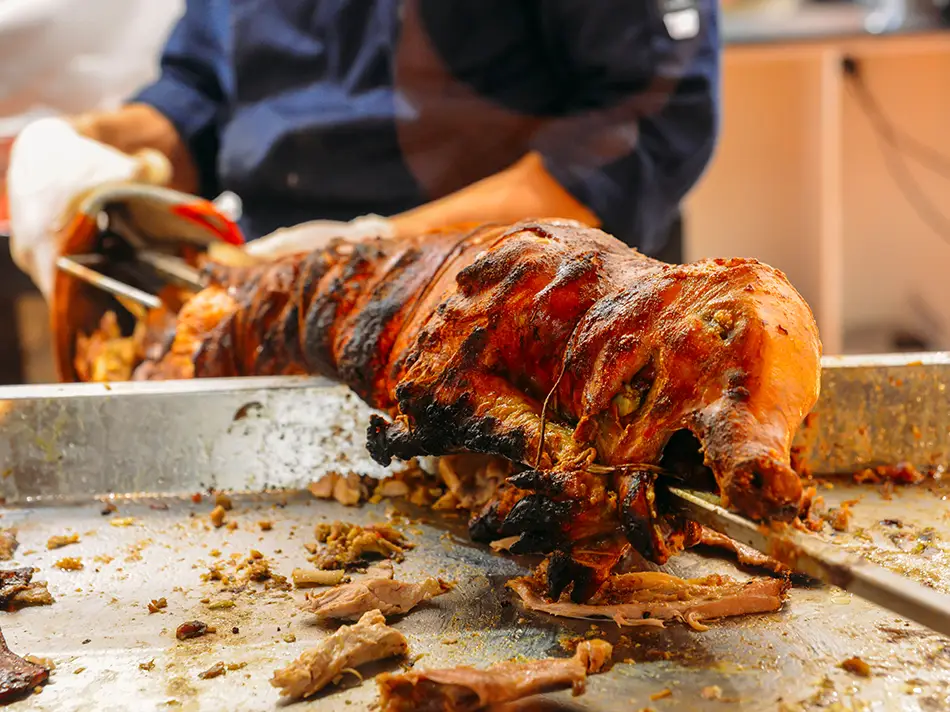
Hornado is a centerpiece of many local markets and festivities. This famous food in Ecuador involves slow-roasting a whole pig, which has been marinated in a blend of garlic, cumin, and chicha (a fermented corn drink) for many hours. The process leaves the meat exceptionally tender while the skin becomes perfectly crisp, known as “cuero.” A plate of hornado is typically served with llapingachos, mote (hominy), avocado, and salad.
2. Fritada (Fried Pork)
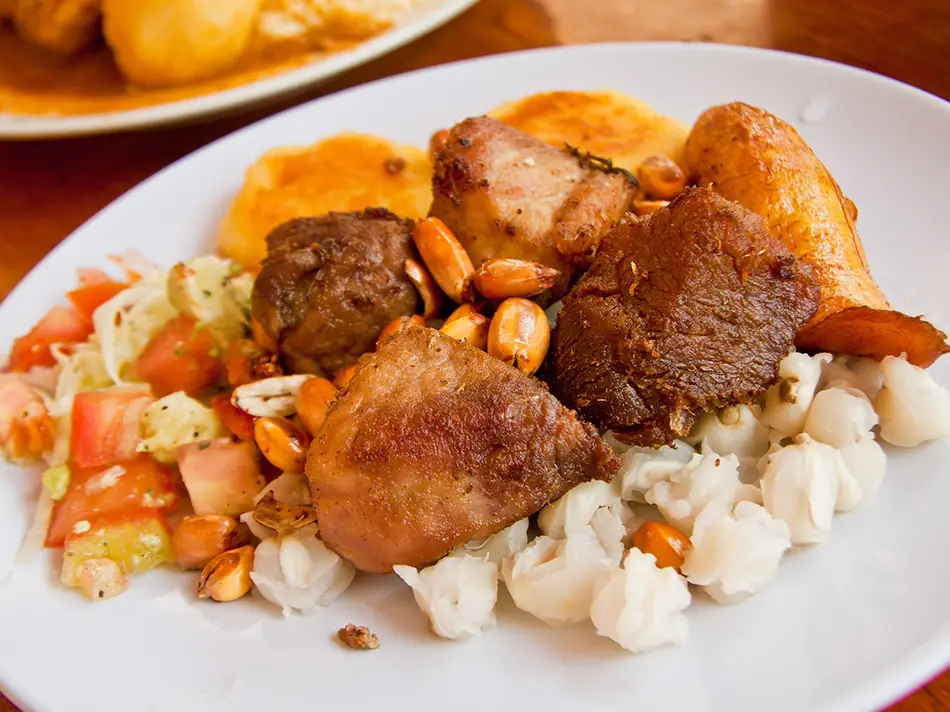
Not to be confused with hornado, fritada is another popular pork dish. It consists of pork chunks boiled in water with spices and orange juice until the water evaporates. The meat is then fried in its own fat until golden and slightly crispy on the outside yet moist inside.
This traditional food in Ecuador is commonly served with fried plantains, mote, boiled potatoes, and a tangy pickled onion and tomato salad called “curtido.” It’s one of the must-try foods in Ecuador when you’re craving something hearty.
3. Cuy (Roasted Guinea Pig)
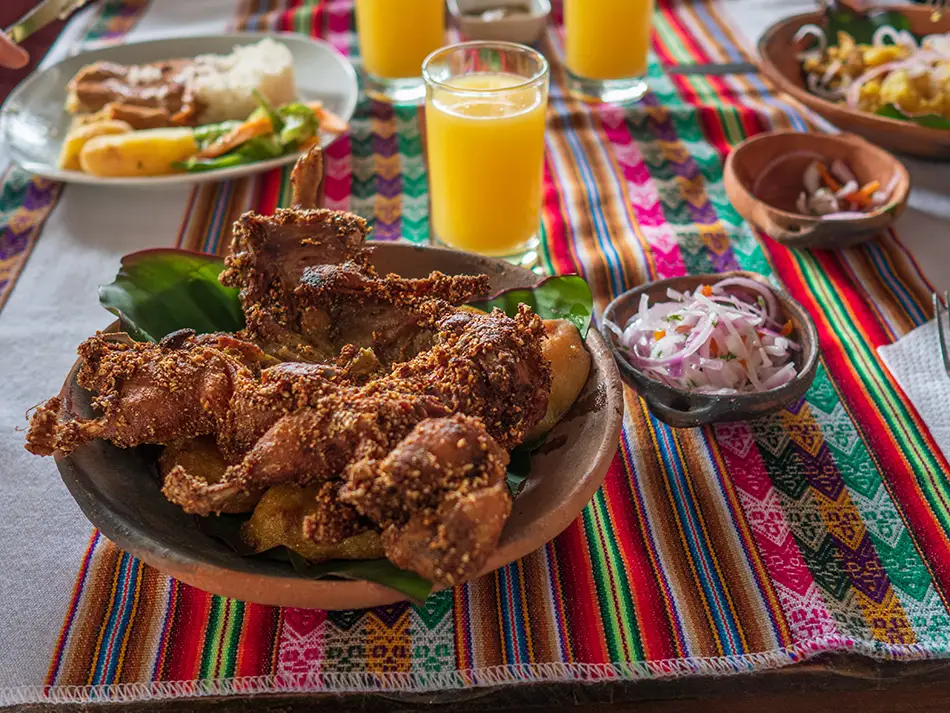
Cuy is a traditional Andean dish consisting of a whole roasted guinea pig. It is a food with deep cultural roots, often prepared for celebrations and special occasions. It is typically seasoned with salt, garlic, and cumin before being slow-roasted over an open flame or baked, resulting in crispy skin.
The meat has a flavor profile that people often compare to rabbit. It is usually served with potatoes, corn, and a savory sauce.
4. Llapingachos (Potato Patties)
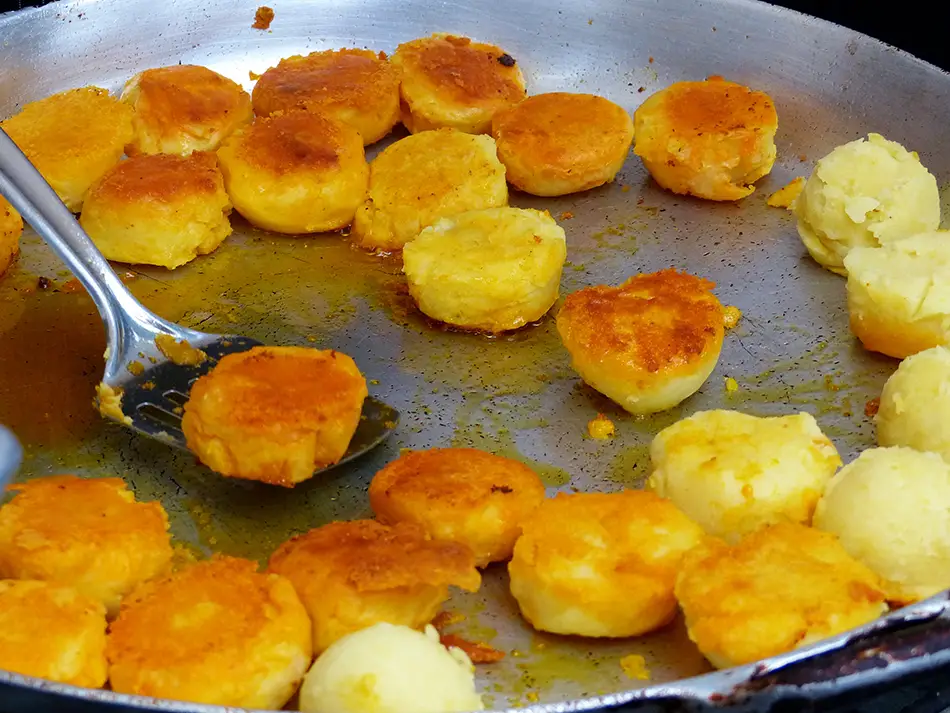
Llapingachos are pan-seared potato patties, a staple of the central Andean highlands. The patties are made from cooked and mashed potatoes, often stuffed with cheese, and then cooked on a griddle until golden brown. They can be served as a main dish, typically accompanied by a fried egg, chorizo, avocado, and a creamy peanut sauce, or as a side for dishes like hornado.
This is a popular vegetarian Ecuadorian food option when served on its own.
5. Churrasco Ecuatoriano (Grilled Steak Platter)
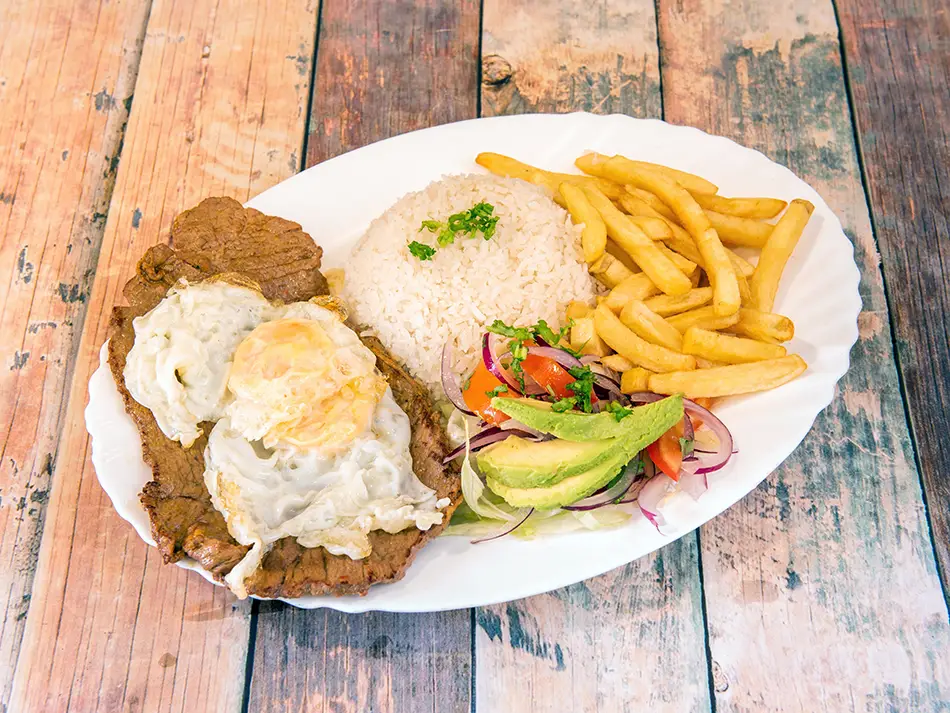
This is the local take on a steak platter. A thin-cut grilled steak, seasoned simply with salt and pepper, is the star of the plate.
What makes the Ecuadorian version distinct are its accompaniments: french fries, rice, a fried egg, slices of avocado, and a small fresh salad. Together, they combine several staple ingredients into one hearty, satisfying meal.
6. Encocado de Pescado (Fish in Coconut Sauce)
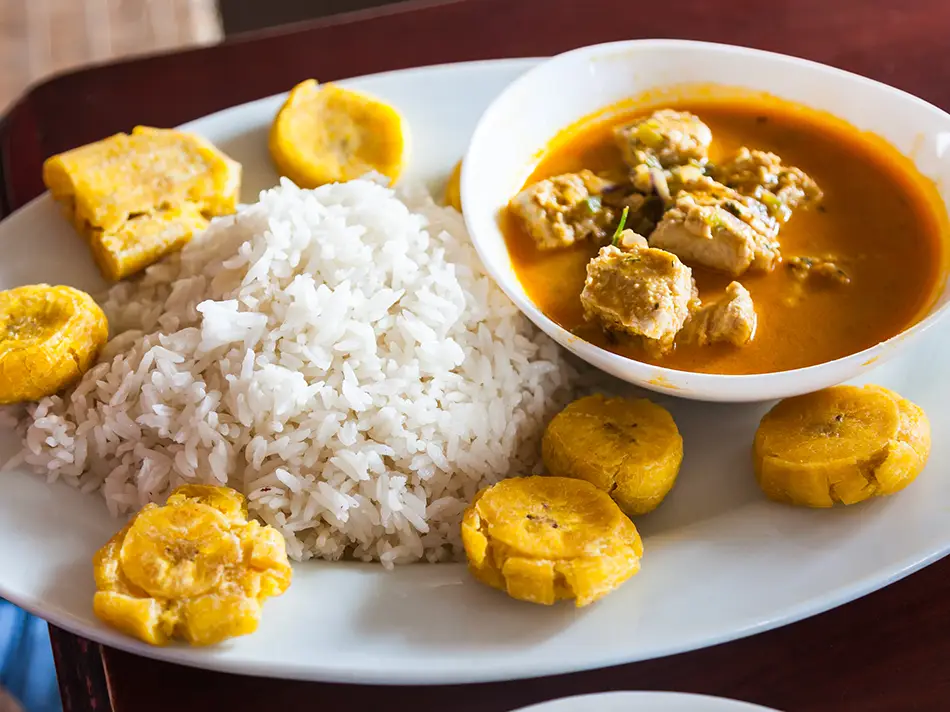
A signature dish from the coastal province of Esmeraldas, encocado features fish or shrimp simmered in a flavorful sauce made from fresh coconut milk, garlic, onions, bell peppers, and herbs. The use of coconut gives the dish a subtle sweetness that balances the savory elements. It is traditionally served with white rice and patacones (fried plantains).
Along the coast, it’s counted among the iconic foods of Ecuador.
Soups & Stews to Add to Your Ecuador Food List
7. Locro de Papa (Potato and Cheese Soup)
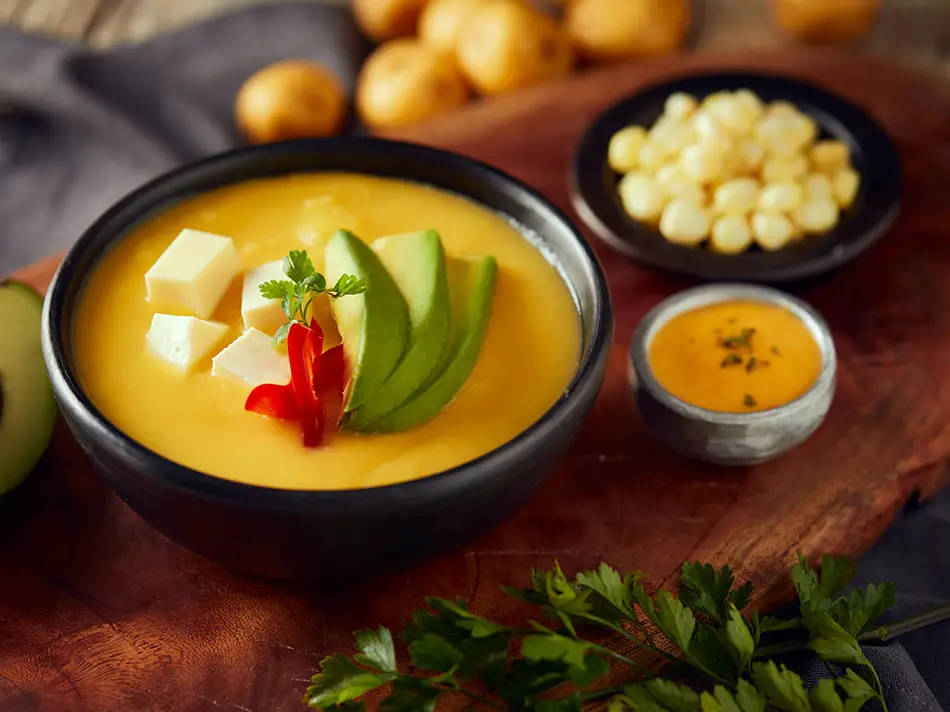
A classic highland comfort food, Locro de Papa is a thick, creamy soup made from slow-cooked potatoes, milk, and fresh cheese. It’s traditionally topped with avocado and cilantro just before serving. Rich yet simple, it remains one of Ecuador’s most beloved dishes.
8. Encebollado (Tuna and Onion Soup)
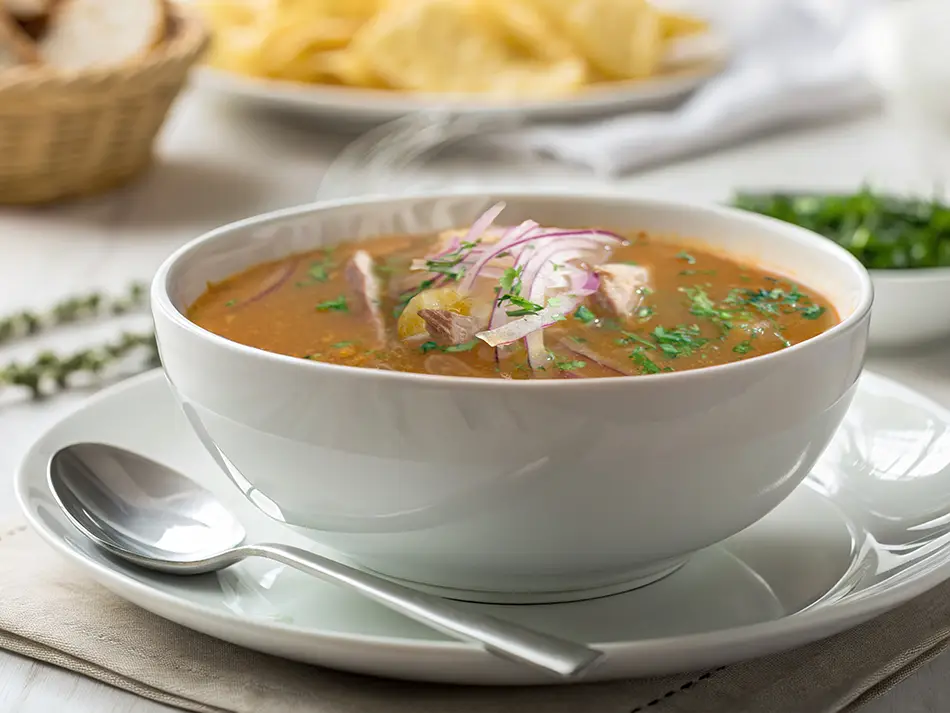
Considered by many to be the national dish of Ecuador, encebollado is a flavorful soup made with fresh albacore tuna, yuca, and a generous amount of pickled red onions. The broth is seasoned with cilantro, cumin, and other spices. It is a popular breakfast, especially as it is widely regarded as a remedy for hangovers. It is often served with chifles (thinly sliced fried plantains) or popcorn for texture.
9. Caldo de Bola de Verde (Plantain Dumpling Soup)
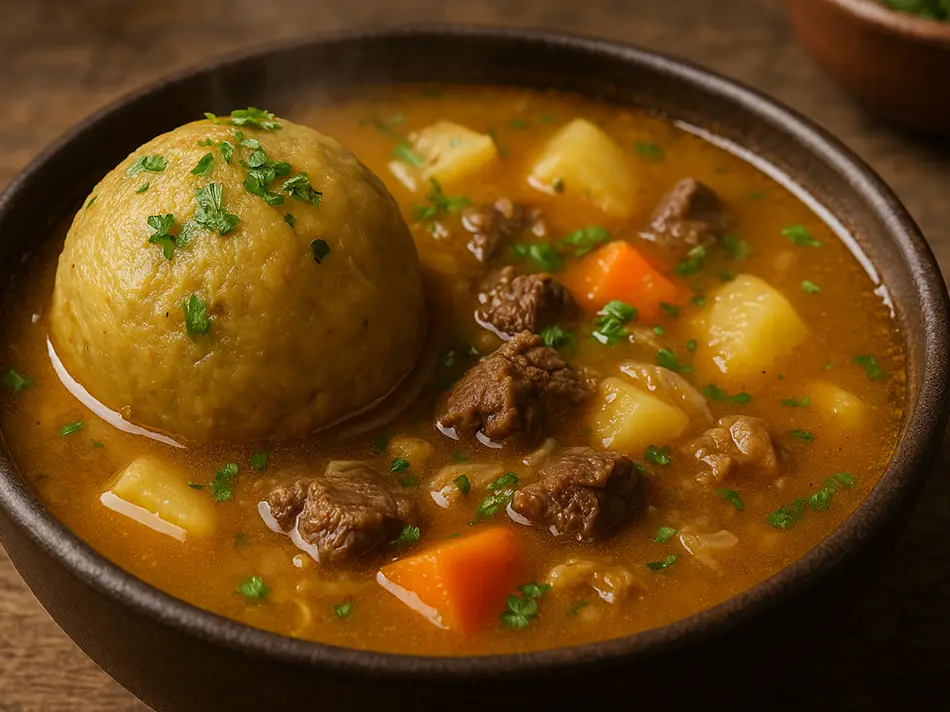
This unique soup is a culinary experience in itself. The “bola de verde” is a large dumpling made from mashed green plantains. It is filled with a mixture of cooked meat (usually beef), vegetables, and sometimes a hard-boiled egg. This dumpling is then simmered in a savory beef broth with corn and yuca. This dish is a good example of the creative use of plantains in authentic Ecuadorian food.
10. Fanesca
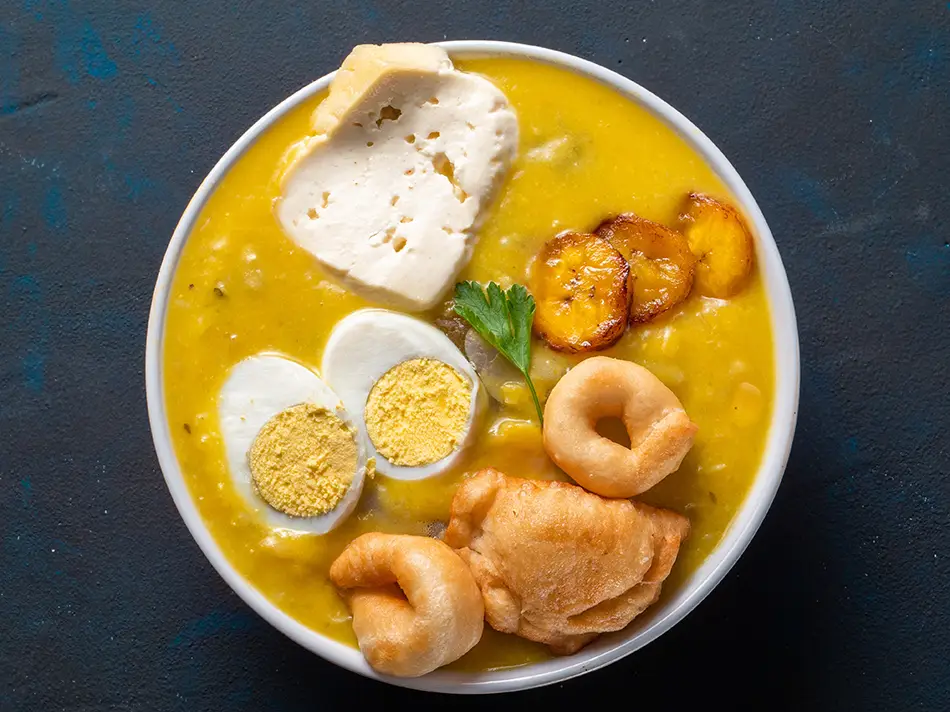
Prepared only once a year during Easter week, Fanesca is a rich and symbolic stew made with twelve types of beans and grains, representing the apostles, along with salt cod, a dried and salted fish that is soaked before cooking. It is traditionally garnished with hard-boiled eggs, fried plantains, and small pastries.
Fanesca is a complex dish, deeply rooted in tradition and among the most anticipated meals in Ecuador.
Small Plates & Cold Dishes: Must-Try Food in Ecuador
11. Ceviche de Camaron (Shrimp Ceviche)
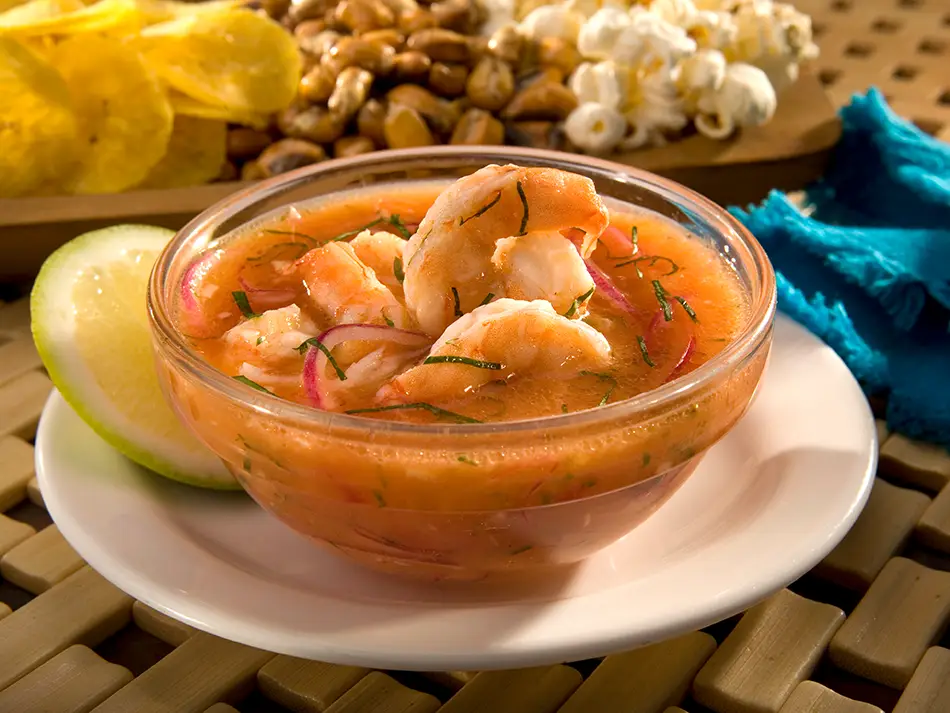
The Ecuadorian style of ceviche differs from its Peruvian counterpart. Here, the shrimp are cooked before being marinated. The marinade is a tangy mixture of lime juice, orange juice, and tomato sauce, creating a soupy consistency. It is mixed with finely chopped red onions, tomatoes, and cilantro. It is served chilled, often with a side of popcorn or chifles for crunch. For many travelers, it sits high among the famous Ecuador foods to start a trip with.
12. Empanadas de Viento (Fried Cheese Empanadas)
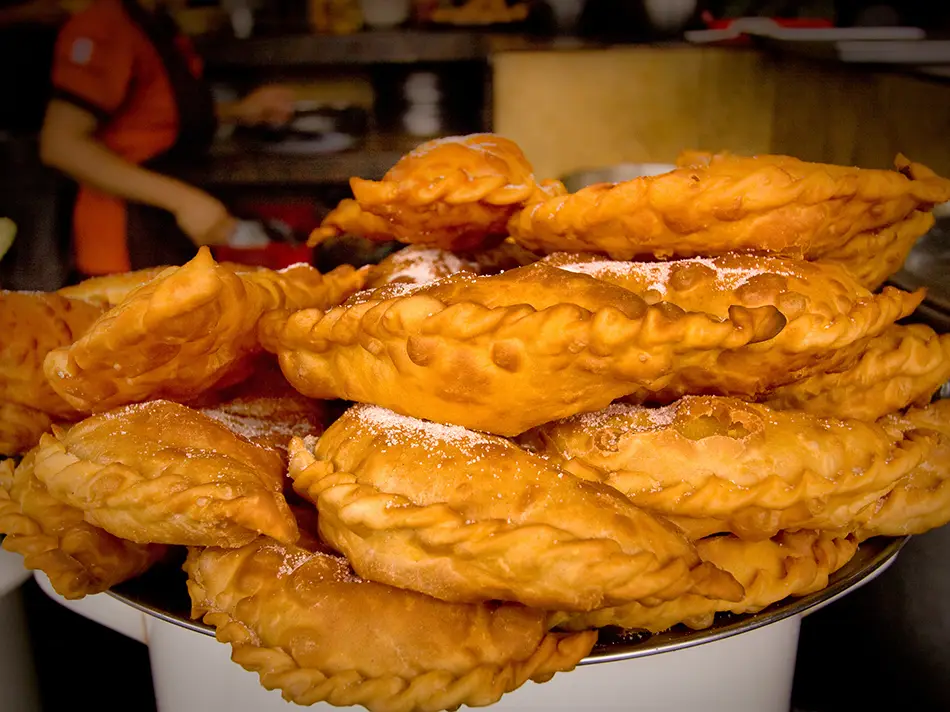
These are large, savory pastries filled with cheese and a little bit of onion. When fried, they puff up with air, which gives them their name, “empanadas of wind.” They are served hot, often with a sprinkle of sugar on top, which creates a pleasant contrast with the savory cheese filling. You can find them at street food stalls and cafes across the country.
13. Humitas (Steamed Corn Cakes)
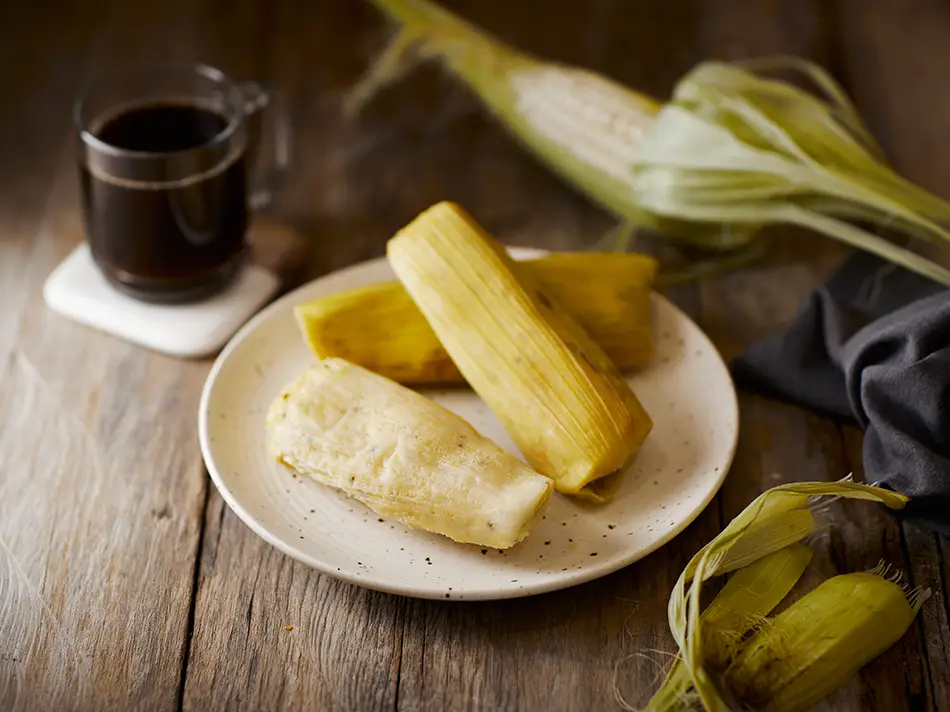
Humitas are a traditional food made from a mixture of ground fresh corn, onions, eggs, and cheese. This mixture is wrapped in corn husks and then steamed.
The result is a soft, moist, and savory cake with a subtle sweetness from the corn. They can be enjoyed for breakfast or as a snack any time of day, sometimes with a cup of coffee.
14. Patacones (Fried Green Plantain Slices)
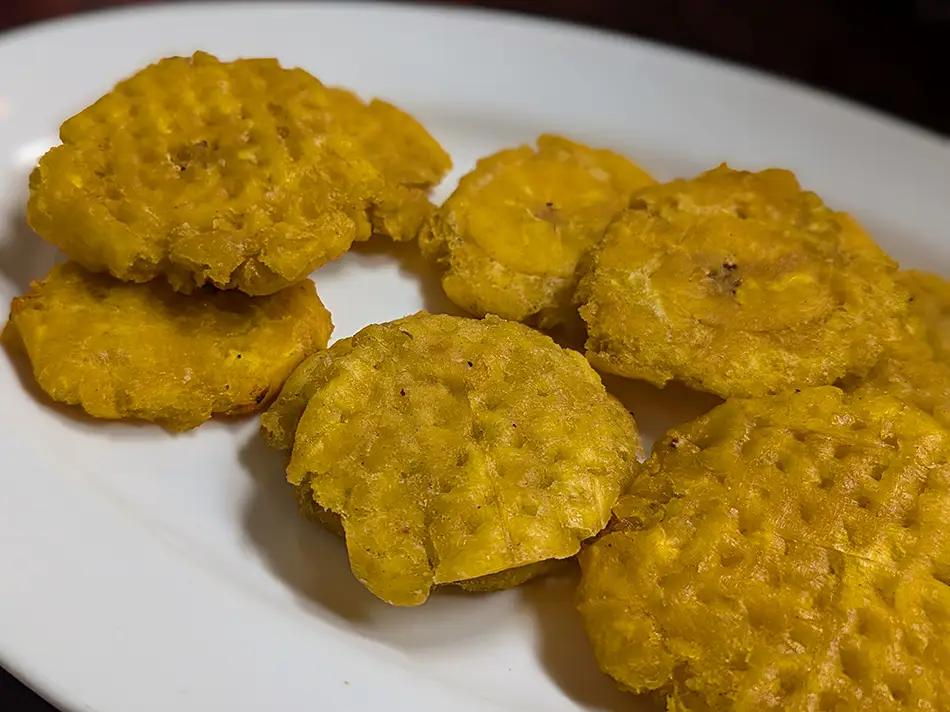
Patacones are a staple side dish throughout the country. They are made from slices of green plantain that are fried once, mashed flat, and then fried a second time until they are crispy. They are lightly salted and serve as a versatile accompaniment to everything from ceviche to fried fish and grilled meats.
Crisp and salty, they represent the typical Ecuador food you’ll find at roadside comedores and beach shacks alike.
Famous Desserts & Sweets in Ecuador
15. Espumilla (Meringue Cream)

A popular street food dessert, espumilla has the appearance of ice cream but is actually a stable meringue foam. It is made from egg whites, sugar, and fruit pulp, most commonly from guava. The mixture is whipped until it forms stiff peaks and is then served in an ice cream cone, often topped with sprinkles or a berry syrup.
16. Morocho (Spiced Corn Pudding)
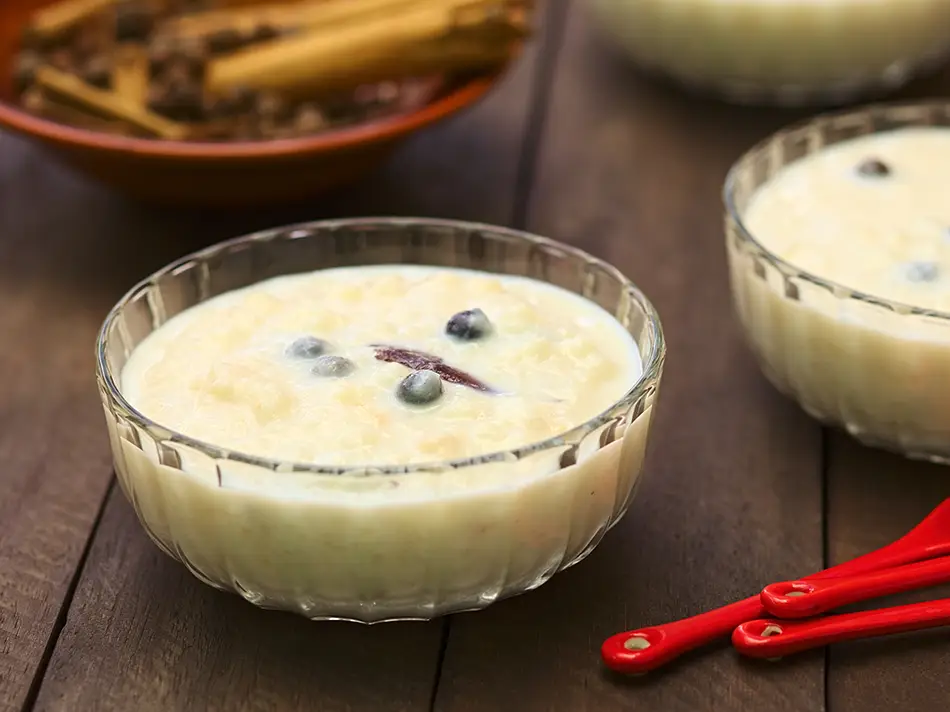
Morocho is a thick, sweet, and warm drink that can also be eaten as a dessert. It is made from “morocho,” a type of cracked, dried corn, which is slow-cooked in milk with cinnamon, raisins, and panela (unrefined cane sugar).
It has a pudding-like consistency and is a comforting treat, especially in the cool Andean highlands. You’ll find it wherever people gather for local food in Ecuador, from markets to bus terminals.
17. Higos con Queso (Figs with Cheese)
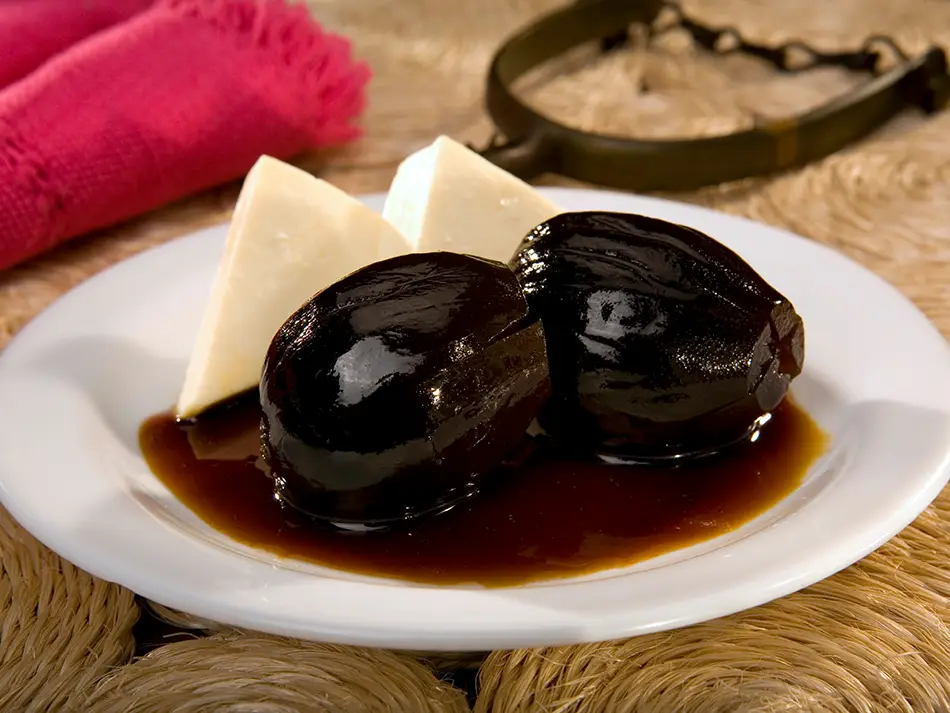
This dessert exemplifies the beauty of simplicity. It consists of figs that have been preserved in a spiced syrup made from panela. The sweet, tender figs are served alongside slices of fresh, mild cheese (“queso fresco”). The contrast between the sweet figs and the slightly salty, creamy cheese makes it a classic pairing.
Authentic Drinks in Ecuador
Colada Morada (Spiced Berry and Flour Drink)
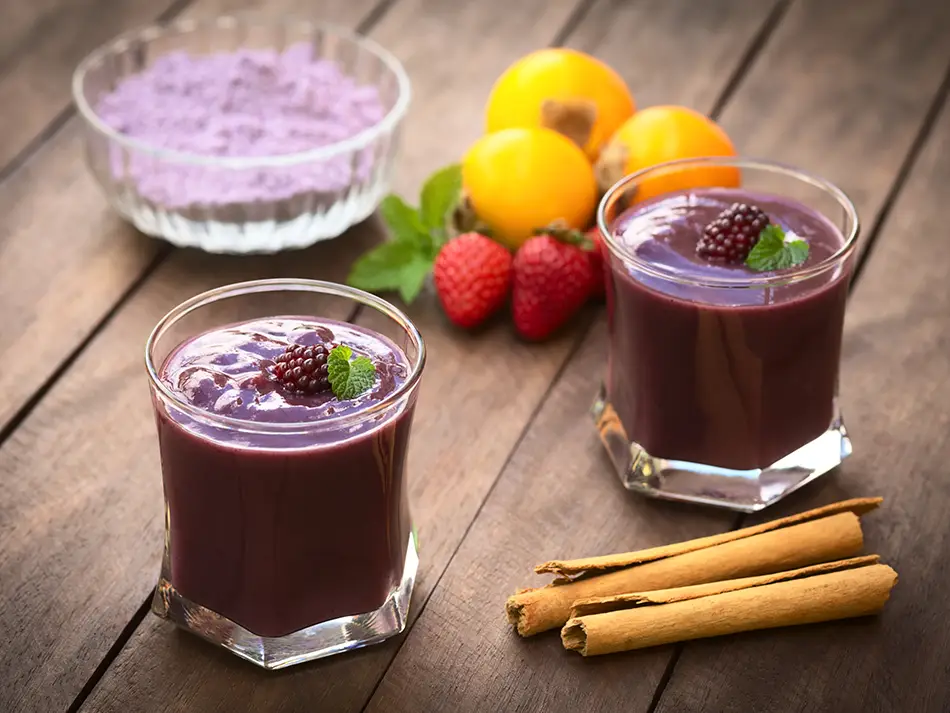
This is a traditional drink prepared for the Day of the Dead on November 2nd. It is a thick, deep purple beverage made from black corn flour and a variety of Andean fruits, including naranjilla, babaco, and berries.
Colada Morada is sweetened with panela and spiced with cinnamon, cloves, and other aromatic herbs. It is typically enjoyed with “guaguas de pan,” sweet bread shaped like babies. If you visit in late October or early November, add it to your list of things to try in Ecuador.
Jugo de Naranjilla (Lulo Juice)
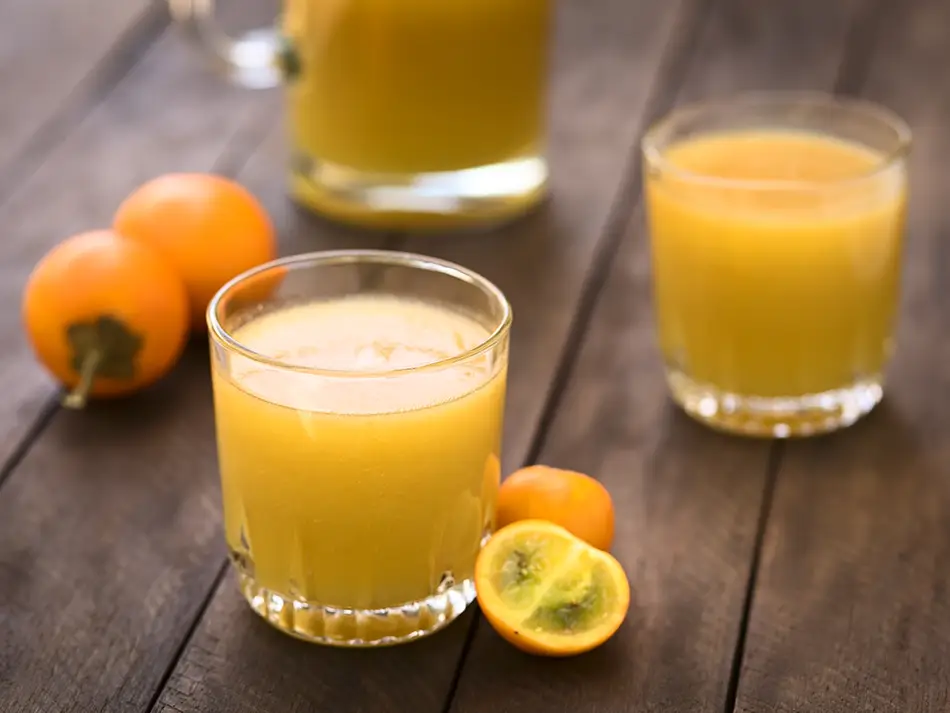
Naranjilla, also known as lulo, is a subtropical fruit native to the region. It has a unique citrus-like flavor, often described as a cross between a rhubarb and a lime. The juice is a common and refreshing drink found in restaurants and homes. It is usually served with sugar to balance its tartness.
Canelazo (Spiced Sugar Cane Alcohol Drink)
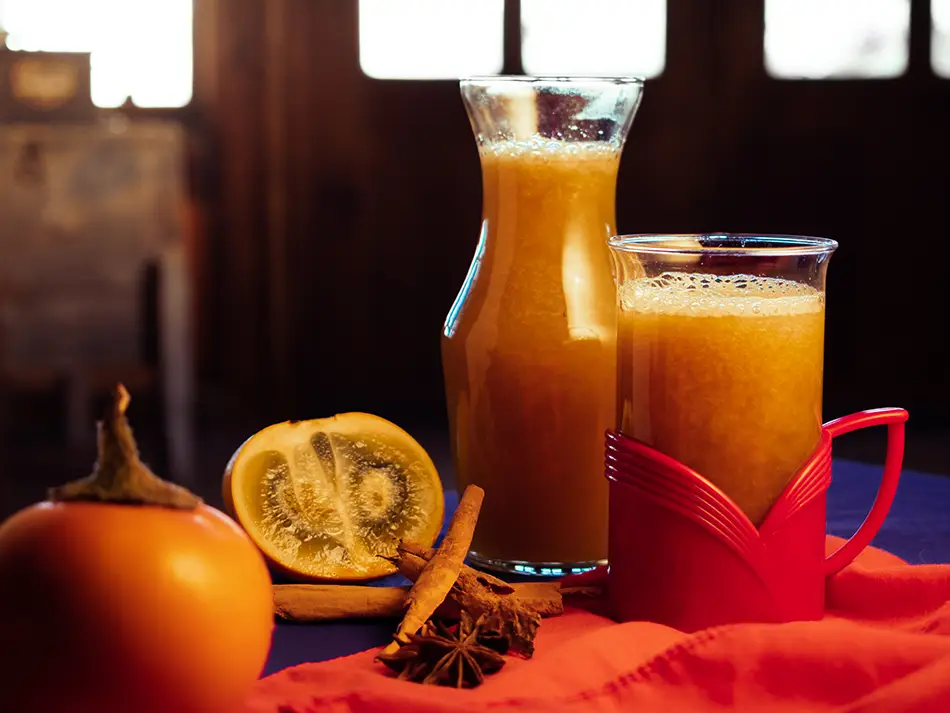
A popular warm beverage in the Andes, canelazo is perfect for cold evenings. It is made from hot water, panela, cinnamon, and “aguardiente,” a local sugar cane spirit. It is often sold by street vendors during festivals and is a staple in social gatherings. A non-alcoholic version is also available.
Chicha de Jora (Inca Corn Beer)
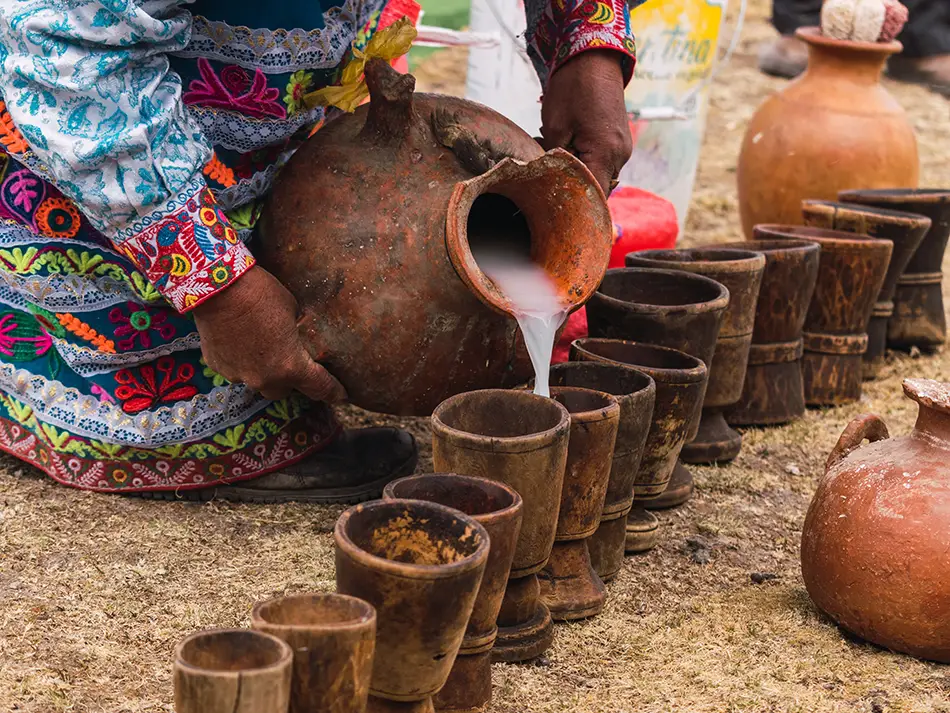
Chicha de Jora is a traditional fermented beverage with ancient roots in the Andes. It is made from “jora,” a type of malted corn, which is fermented for several days. It has a slightly sour taste and a low alcohol content. This drink is an important part of indigenous culture and is often used in rituals and communal gatherings.
Keep Track of Your Gastro-Trip in Ecuador
You’ve got the list. Now go taste your way through the best food in Ecuador. Whether it’s smoky grilled meats, rich soups from the highlands, or bright ceviches by the sea — don’t just eat, experience.
Download the interactive PDF, keep track, take notes, and turn your trip into a personal culinary story.
Enjoy every bite — and come back a true gastro travel pro!


